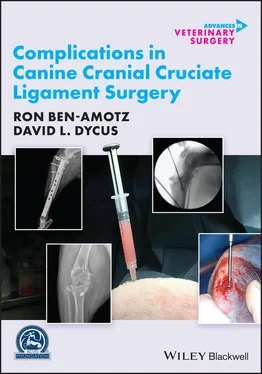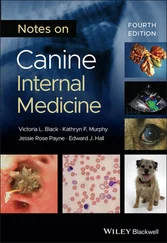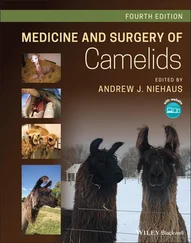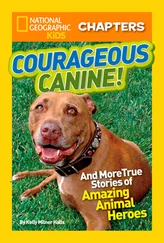As SSIs lead to further medical or surgical interventions, they have been identified to cause an increased financial burden for owners, along with increased morbidity for our veterinary patients [28, 88]. Despite the increased costs, protracted recoveries and increased patient morbidities, owner assessment of long‐term outcome was not significantly affected [23]. While not all risk factors can be controlled, many risk factors can be addressed with diligent surgeon and patient preoperative preparation. Additionally, active surveillance may help to improve the rate of identification of SSIs, which may lead to earlier interventions.
1 1. Turk, R., Singh, A., and Weese, J.S. (2015). Prospective surgical site infection surveillance in dogs. Vet. Surg. 44: 2–8.
2 2. Eugster, S., Schawalder, P., Gaschen, F., and Boerlin, P. (2004). A prospective study of postoperative surgical site infections in dogs and cats. Vet. Surg. 33: 542–550.
3 3. Nicholson, M., Beal, M., Shofer, F., and Brown, D.C. (2002). Epidemiologic evaluation of postoperative wound infection in clean‐contaminated wounds: a retrospective study of 239 dogs and cats. Vet. Surg. 31: 577–581.
4 4. Fitzpatrick, N. and Solano, M.A. (2010). Predictive variables for complications after TPLO with stifle inspection by arthrotomy in 1000 consecutive dogs. Vet. Surg. 39: 460–474.
5 5. Beal, M.W., Brown, D.C., and Shofer, F. (2000). The effects of perioperative hypothermia and the duration of anesthesia on postoperative wound infection rate in clean wounds: a retrospective study. Vet. Surg. 29: 123–127.
6 6. Frey, T.N., Hoelzler, M.G., Scavelli, T.D. et al. (2010). Risk factors for surgical site infection‐inflammation in dogs undergoing surgery for rupture of the cranial cruciate ligament: 902 cases (2005–2006). J. Am. Vet. Med. Assoc. 236 (1): 88–94.
7 7. Vasseur, P.B., Levy, J., Dowd, E., and Eliot, J. (1988). Surgical wound infection rates in dogs and cats: data from a teaching hospital. Vet. Surg. 17 (2): 60–64.
8 8. Aiken, M.J., Hughes, T.K., Abercromby, R.H. et al. (2015). Prospective, randomized comparison of the effect of two antimicrobial regimes on surgical site infection rate in dogs undergoing orthopedic implant surgery. Vet. Surg. 44: 661–667.
9 9. Pratesi, A., Moores, A.P., Downes, C. et al. (2015). Efficacy of postoperative antimicrobial use for clean orthopedic implant surgery in dogs: a prospective randomized study in 100 consecutive cases. Vet. Surg. 44: 653–660.
10 10. Casale, S.A. and McCarthy, R.J. (2009). Complications associated with lateral fabellotibial suture surgery for cranial cruciate ligament injury in dogs: 363 cases (1997‐2005). J. Am. Vet. Med. Assoc. 234: 229–235.
11 11. Dulisch, M. (1981). Suture reaction following extra‐articular stabilization in the dog. Part II: a prospective study of 66 stifles. J. Am. Anim. Hosp. Assoc. 17: 572–574.
12 12. Rappa, N.S. and Radasch, R.M. (2016). Post‐operative complications associated with the Arthrex Canine Cranial Cruciate Ligament Repair Anchor System in small‐ to medium‐sized dogs: a retrospective analysis (2009–2012). Can. J. Vet. Res. 57: 847–852.
13 13. Nazarali, A., Singh, A., and Weese, J.S. (2014). Perioperative administration of antimicrobials during tibial plateau leveling osteotomy. Vet. Surg. 43: 966–971.
14 14. Clark, A.C., Greco, J.J., and Bergman, P.J. (2020). Influence of administration of antimicrobial medications after tibial plateau leveling osteotomy on surgical site infections: a retrospective study of 308 dogs. Vet. Surg. 49: 106–113.
15 15. Wolf, R.E., Scavelli, T.D., Hoelzler, M.G. et al. (2012). Surgical and postoperative complications associated with tibial tuberosity advancement for cranial cruciate ligament rupture in dogs: 458 cases (2007–2009). J. Am. Vet. Med. Assoc. 240 (12): 1481–1487.
16 16. Yap, F.W., Calvo, I., Smith, K.D., and Parkin, T. (2015). Perioperative risk factors for surgical site infection in tibial tuberosity advancement: 224 stifles. Vet. Comp. Orthop. Traumatol. 28: 199–206.
17 17. Costa, M., Craig, D., Cambridge, T. et al. (2017). Major complications of tibial tuberosity advancement in 1613 dogs. Vet. Surg. 46: 494–500.
18 18. Serratore, V.R. and Barnhart, M.D. (2018). Results and complications after removal of tibial tuberosity advancement cage for treatment of surgical site infections: a retrospective study. Vet. Surg. 47: 768–773.
19 19. Tuan, J., Solano, M.A., and Danielski, A. (2019). Risk of infection after double locking plate and screw fixation of tibial plateau leveling osteotomies in dogs weighing greater than 50 kilograms. Vet. Surg. 48: 1211–1217.
20 20. Watson, F.C., McMullan, W., Jordan, C.J. et al. (2019). The use of absorbable staples for skin closure after tibial plateau leveling osteotomy. Vet. Surg. 48: 35–41.
21 21. Nazarali, A., Singh, A., Moens, N.M.M. et al. (2015). Association between methicillin‐resistant Staphylococcus pseudintermedius carriage and the development of surgical site infections following tibial plateau leveling osteotomy in dogs. J. Am. Vet. Med. Assoc. 247 (8): 909–916.
22 22. Hans, E.C., Barnhart, M.D., Kennedy, S.C., and Naber, S.J. (2017). Comparison of complications following tibial tuberosity advancement and tibial plateau levelling osteotomy in very large and giant dogs 50 kg or more in body weight. Vet. Comp. Orthop. Traumatol. 30: 299–305.
23 23. Brown, G., Maddox, T., and Siles, M.M.B. (2016). Client‐assessed long‐term outcome in dogs with surgical site infection following tibial plateau levelling osteotomy. Vet. Rec. 179: 409.
24 24. Livet, V., Taroni, M., Ferrand, F.‐X. et al. (2019). Modified triple tibial osteotomy for combined cranial cruciate ligament rupture, tibial deformities, or patellar luxation. J. Am. Anim. Hosp. Assoc. 55: 291–300.
25 25. Frederick, S.W. and Cross, A.R. (2017). Modified cranial closing wedge osteotomy for treatment of cranial cruciate ligament insufficiency in dogs with excessive tibial plateau angles: technique and complications in 19 cases. Vet. Surg. 46: 403–411.
26 26. De Sousa, R., Egan, P., Parsons, K. et al. (2017). Treatment of tibial diaphyseal fractures following plateless tibial tuberosity advancement to manage cranial cruciate disease. J. Small Anim. Pract. 58: 372–379.
27 27. Lopez, D.J., VanDeventer, G.M., Krotscheck, U. et al. (2018). Retrospective study of factors associated with surgical site infection in dogs following tibial plateau leveling osteotomy. J. Am. Vet. Med. Assoc. 253 (3): 315–321.
28 28. Giannetto, J.J. and Aktay, S.A. (2019). Prospective evaluation of surgical wound dressings and the incidence of surgical site infections in dogs undergoing a tibial plateau levelling osteotomy. Vet. Comp. Orthop. Traumatol. 32: 18–25.
29 29. Spencer, D.D. and Daye, R.M. (2018). A prospective, randomized, double‐blinded, placebo‐controlled clinical study on postoperative antibiotherapy in 150 arthroscopy‐assisted tibial plateau leveling osteotomies in dogs. Vet. Surg. 47: E79–E87.
30 30. Atwood, C., Maxwell, M., Butler, R., and Wills, R. (2015). Effects of incision closure method on infection prevalence following tibial plateau leveling osteotomy in dogs. Can. Vet. J. 56: 375–381.
31 31. Savicky, R., Beale, B., Murtaugh, R. et al. (2013). Outcome following removal of TPLO implants with surgical site infection. Vet. Comp. Orthop. Traumatol. 26: 260–265.
32 32. Etter, S.W., Ragetly, G.R., Bennett, R.A., and Schaeffer, D.J. (2013). Effect of using triclosan‐impregnated suture for incisional closure on surgical site infection and inflammation following tibial plateau leveling osteotomy in dogs. J. Am. Vet. Med. Assoc. 242: 355–358.
33 33. Gallagher, A.D. and Mertens, W.D. (2012). Implant removal rate from infection after tibial plateau leveling osteotomy in dogs. Vet. Surg. 41: 705–711.
Читать дальше












